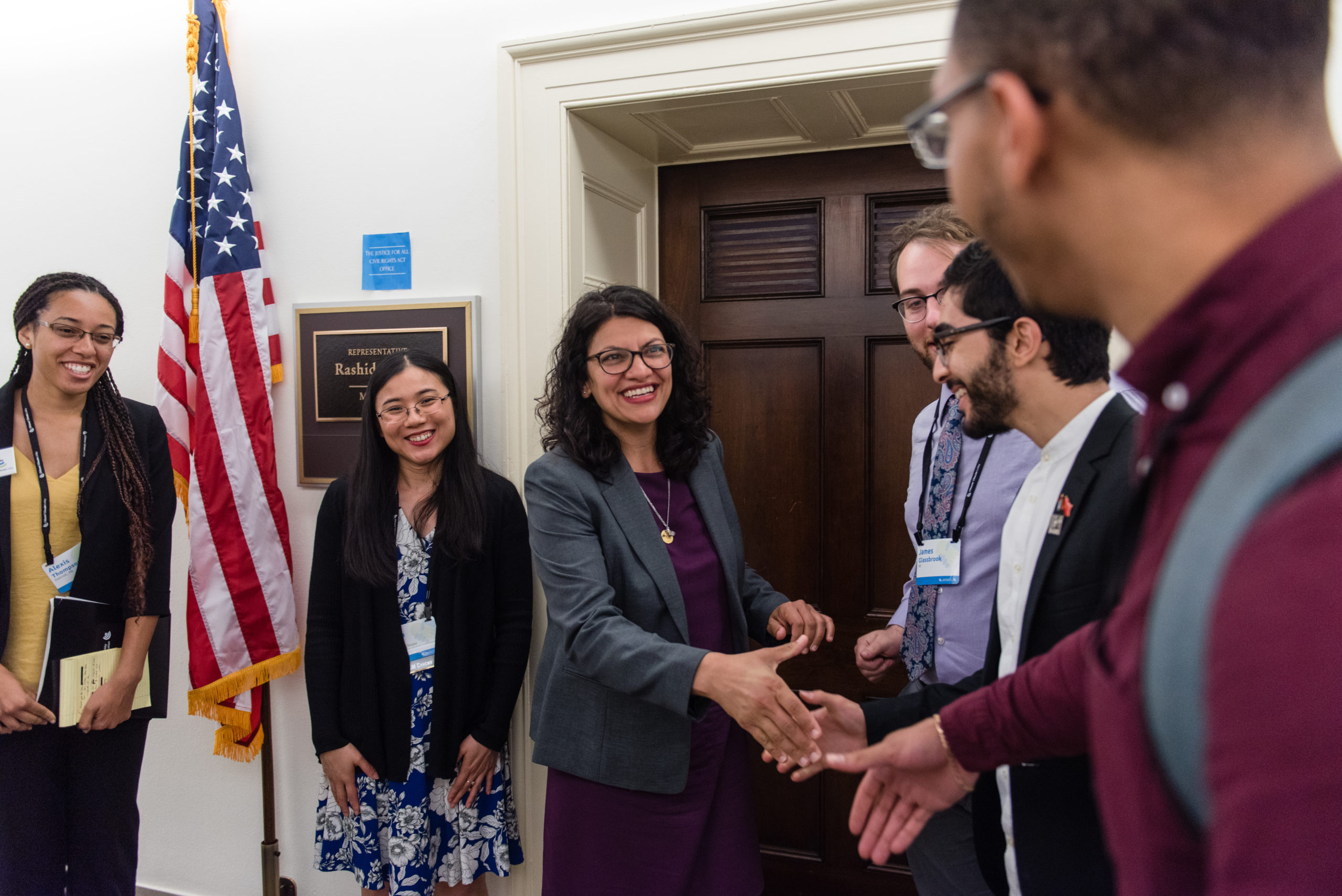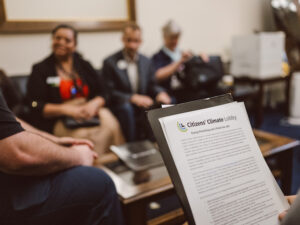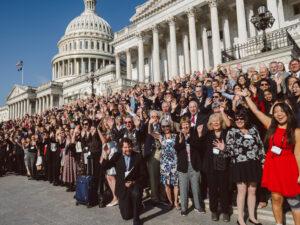How to meet with your member of Congress
By Katie Zakrzewski
With CCL’s June conference fast approaching, many CCLers will be organizing in-person lobby meetings while in D.C. This might be the first in-person lobby experience for many CCLers, and the first time lobbying at all for many others.
This blog will help volunteers get a better idea of the roles and responsibilities that each volunteer plays in a lobby meeting, so you can better prepare for meeting with your members of Congress.
Leader
One of the first roles in a lobby meeting is the role of the leader. The leader is usually the liaison to the member of Congress’s office, although it doesn’t have to be. If the leader is not the liaison, they will brief the liaison after the meeting to let them know how things went. The meeting leader usually assigns roles before the lobby meeting and hosts a practice session with the rest of the team. The leader helps control the pace and the flow of the lobby meeting, facilitating transitions in the meeting agenda, and cueing other members to introduce themselves or to introduce primary and secondary asks.
It’s worth noting that introductions should be personal and specific to the individual, and each should highlight a potential demographic or concern that members of Congress might have. For example, a student lobbyist may discuss the impact of climate on their future, or a conservative might discuss the impact of climate on their job or company.
Appreciator
Another role in a lobby meeting is the appreciator. The appreciator takes a moment to thank the member of Congress for something that they’ve done or accomplished recently. This appreciation doesn’t necessarily have to be related to climate. This appreciation comes after everyone, including the congressional staffer, has introduced themselves, and sets the tone of the meeting as one of thankfulness and allyship, as opposed to attacking and offensive.
Timekeeper
The timekeeper makes sure that the meeting stays on track and that adequate time is being allocated to each topic. At the beginning of the meeting, the timekeeper will ask how much time the member of Congress has to meet with the lobby team. The team will then adjust their plans accordingly. Throughout the meeting, the timekeeper will note who is talking and how much. Ideally, you want your member of Congress or that member’s staffer to be doing most of the talking: it’s not every day that you have a private audience with them, so listen and learn as much as you can! The timekeeper will signal when five minutes are remaining so that the leader can work on bringing the meeting to a close.
Notetaker
The notetaker is a lobby team member who writes down what the member of Congress or staffer says following each question from CCLers. They shouldn’t worry about writing down what CCLers say, as what the member of Congress or staffer says is most important. The notetaker should be an experienced lobby member capable of following fast-moving conversation. They should also count how many open-ended questions CCLers ask their congressional offices. After the meeting, the notetaker will type up their notes and send them to the team leader to submit when they fill out their post-meeting form.
Asker
The asker is the team member who will introduce CCL’s primary and secondary/supporting asks. If this meeting is in person, they will hand physical copies of CCL’s one-page legislation summaries to the congressional members. If meetings are online, the liaison has usually sent these files to the staffer while setting up the meeting. The asker should be a constituent with a strong understanding of the legislation and its implications. There can also be multiple askers; for example, one member can be the primary asker, while another can be the secondary asker.
Deliverer
The deliverer is responsible for bringing any relevant postcards, endorsement letters, or constituent letters for the member of Congress to the meeting. Many lobby teams will couple this role with either the role of the timekeeper or note-taker, depending on how many volunteers are available.
Photographer
The photographer is the team member who, after receiving the member’s permission, will take a photo of the congressional member and the rest of the team to be shared online and on social media after the meeting. If meetings are held digitally, this photograph is usually taken in the form of a screenshot with the team on Zoom’s gallery view.
Followup
One of the lobby team members will usually follow up with the congressional office by sending any materials referenced during the meeting, such as studies or editorials, as well as getting them into contact with any individuals in the community who might have been referenced. This individual will also be responsible for sending the congressional office a thank you card. The liaison is usually responsible for the task of following up, although they do not have to be the individual to do it. If the individual is not the liaison, the volunteer should coordinate materials to send with the liaison following the meeting.
In terms of discussion throughout the meeting, all lobby team members should participate in the discussion, especially constituents.
With lobbying opportunities becoming available again, this blog will help you get a better idea of how to most effectively lobby your member of Congress, work with other volunteers, and create the political will for a livable world.
To listen to volunteers share some of their own lobbying experiences, you can watch the video below:






